
All categories
Featured selections
Trade Assurance
Buyer Central
Help Center
Get the app
Become a supplier

(10725 products available)













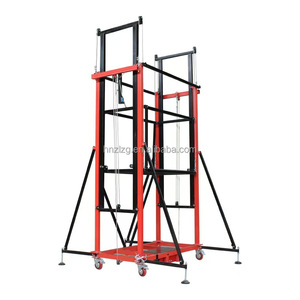
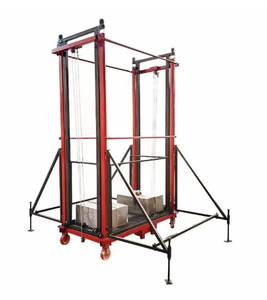

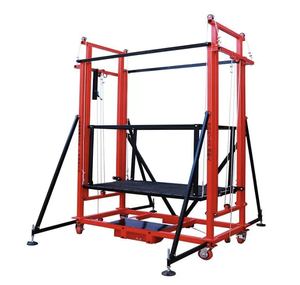
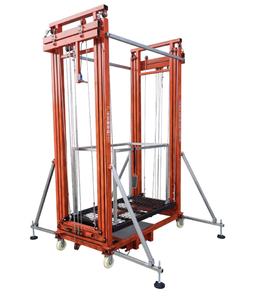
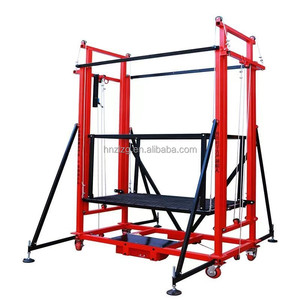



























There are different types of scaffolding accessories used in construction. Here is a list of some of them:
Scaffolding Couplers
These are small fittings that connect scaffolding pipes. They help make a strong and stable scaffolding frame. Scaffolding couplers come in different types, like clamp or socket scaffolding couplers. The clamp coupler uses a bolt to clamp two tubes together. Socket scaffolding couplers have sockets welded on the tubes to fit into each other. They help builders make a temporary support framework quickly.
Scaffolding Base Plates
Base plates are welded to the bottom of each vertical post. They spread the weight of the scaffolding over a larger area on the ground. Scaffold base plates help prevent the poles from sinking into soft ground or slipping. They are important for keeping workers safe while doing high-rise construction jobs.
Scaffolding Jacks
Scaffold jacks are devices used to adjust the height of scaffolding beams. They can be used on both metal and wooden scaffolding. Scaffolding jacks make it easy to level the platform, even if the ground is uneven. They are important for making scaffolds that are safe and stable for construction work at different heights.
Cross Braces
Cross braces are scaffolding accessories that look like an X shape. They are placed diagonally between the vertical poles to make a braced frame. Cross braces help transfer loads and give the structure rigidity. They prevent the vertical poles from swaying or moving side to side. This makes scaffolding support systems much safer for workers.
Scaffold Planks
These are wooden or metal boards that form the working platform. Scaffold planks provide a space for workers to stand on and put materials. They are installed horizontally between the vertical standards. Scaffold planks support the weight of workers, tools, and materials. They are an important part of any scaffolding system.
Toe Boards
Toe boards are installed on the lower edges of the scaffold platform. They act like a guardrail to prevent tools or materials from falling off the edge. Made from wood or metal, toe boards help keep the work area safe. They are important for preventing accidents caused by objects falling from height.
Scaffold Safety Nets
These nets are hung around the sides of the scaffold frame. They catch any falling tools or materials, preventing them from hitting people below. Made from durable mesh material, safety nets help protect pedestrians and workers on lower levels. They are an important accessory for high-rise construction projects.
Scaffolding provides temporary support to workers and materials during construction projects. Accessories are critical components of a scaffolding system. They ensure safety, stability, and the overall efficiency of the scaffolding setup. Here are the key functions and features of scaffolding accessories:
Scaffolding accessories are used across multiple industries to improve safety and support construction projects. Common industries include:
Choosing the right scaffolding accessories involves looking at several factors. Here are some of them:
Load capacity
The intended use of the project should be considered when selecting a load capacity for scaffolding. This ensures that the accessories will be able to support the weight of the workers, materials, and equipment. Different types of scaffolding, such as modular scaffolding and ringlock scaffolding, have different load capacities. Hence, it is important to choose accessories with a load capacity that is suitable for the project.
Quality and standards
The local regulations and industry standards should be considered when selecting scaffolding accessories. This ensures that the accessories are safe and durable. It is important to choose scaffolding accessories that have been constructed with high-quality materials. This is because quality materials will offer greater resistance to wear and tear.
Compatibility
When choosing scaffolding accessories, look for options that are compatible with existing scaffolding. This ensures that all components work well together. Accessory types also influence compatibility. For instance, accessories for tube-and-coupler scaffolding, such as steel scaffolding, are not compatible with putlog scaffolding.
Adjustability
When selecting scaffolding accessories, choose options that are adjustable. This is because adjustable accessories increase versatility. They also accommodate different project requirements. Additionally, they are useful for leveling the scaffolding on uneven surfaces.
Material
The working environment should be considered when choosing the material for scaffolding accessories. For instance, aluminum accessories are lightweight and resistant to rust. Therefore, they are suitable for projects where portability is important. On the other hand, steel accessories are durable and provide better load-bearing capacity. They are therefore ideal for projects that require a high level of strength.
Q1: Are there standardized sizes for scaffolding accessories?
A1: There are no standardized sizes for scaffolding accessories because each project has unique requirements. However, some commonly used accessories like clamps and bolts come in standard sizes to fit various scaffolding components.
Q2: How does one determine the quality of a scaffolding accessory?
A2: The best way to determine the quality of a scaffolding accessory is by inspecting the material it is manufactured from. Quality accessories are usually made from durable materials like aluminum and high-grade steel. One can also check the certifications and industry standards compliance.
Q3: What are the common materials used in manufacturing scaffolding accessories?
A3: Scaffolding accessories are mostly manufactured from materials like aluminum and steel. Accessories can also be manufactured from other materials, like nylon, used to make scaffolding bags and belts.
Q4: What are the weight limits for scaffolding accessories?
A4: Scaffolding accessories don't have specified weight limits because each accessory is designed for specific functions. For example, scaffolding pipes can support numerous weights, while scaffolding braces add stability and rigidity and distribute weight evenly.
Q5: How should scaffolding accessories be stored when not in use?
A5: Scaffolding accessories should be kept in a dry and cool place to prevent corrosion. They should be stored above the ground using racks and in a well-organized manner to enable easy retrieval.